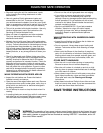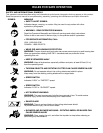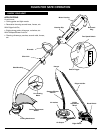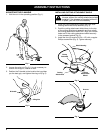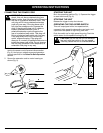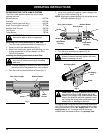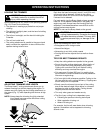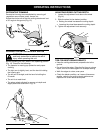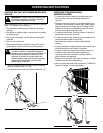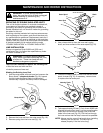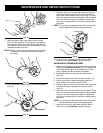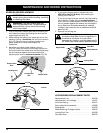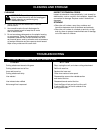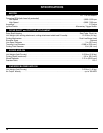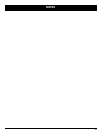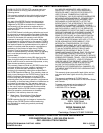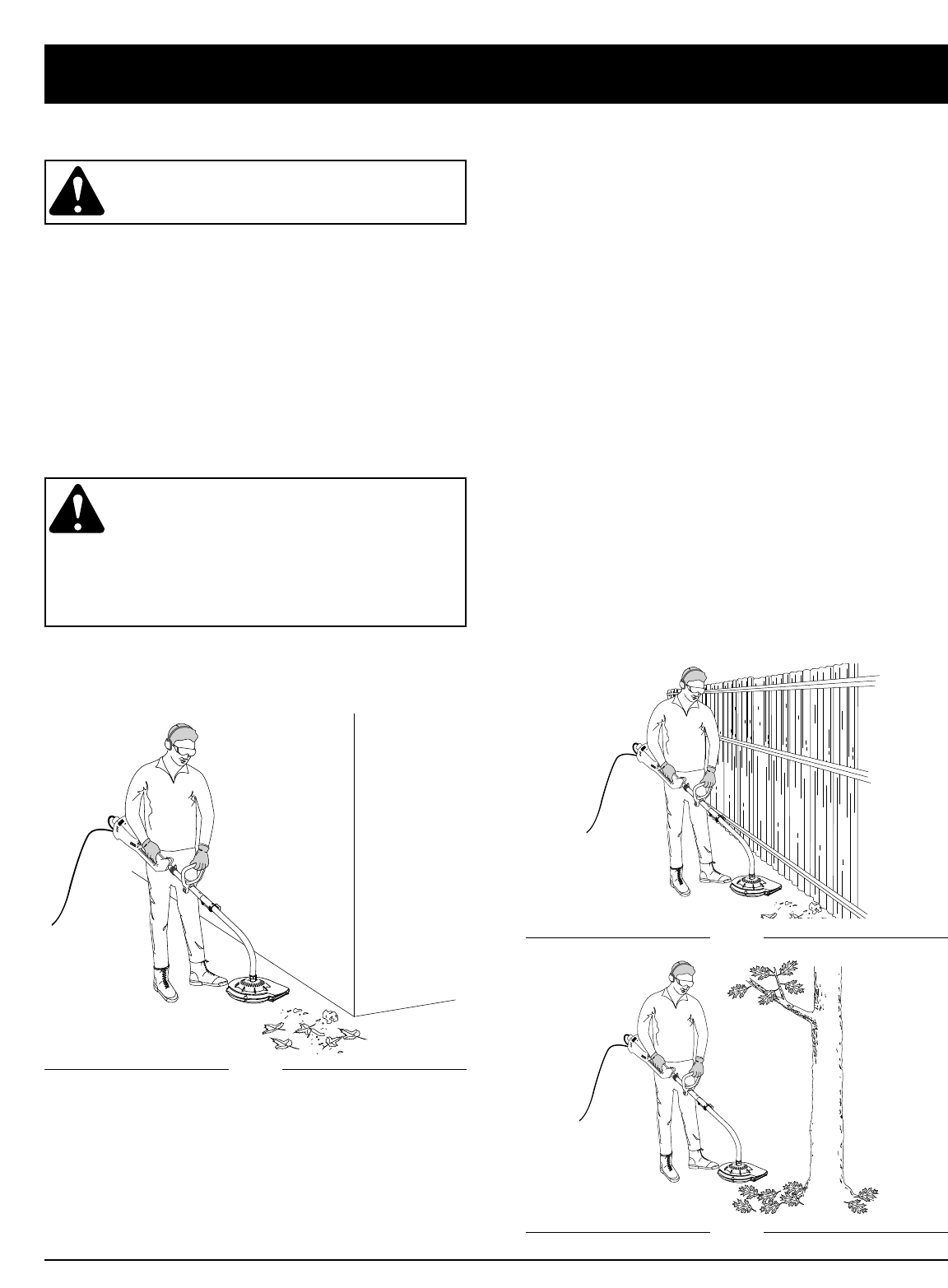
OPERATING INSTRUCTIONS
13
OPERATING TIPS WHEN USING
SWEEPER/BLOWER
• To reduce the risk of hearing loss associated with
sound level(s), the use of hearing protection is
required.
• Operate power equipment only at reasonable hours –
not early in the morning or late at night when people
might be disturbed. Comply with time listed in local
ordinance. Usual recommendations are 9:00 am to
5:00 pm, Monday through Saturday.
• To reduce noise levels, limit the number of pieces of
equipment used at any one time.
• To reduce noise levels, operate power blowers at the
lowest possible speed to do the job.
• Use rakes and brooms to loosen debris before
blowing.
• In dusty conditions, slightly dampen surfaces or use a
mister attachment when water is available.
• Conserve water by using power blowers instead of
hoses for many lawn and garden applications,
including areas such as gutters, screens, patios,
grills, porches, and gardens
• Watch out for children, pets, open windows, or freshly
washed cars, and blow debris away.
• After using blowers and other equipment, CLEAN UP!
Dispose of debris in trash receptacles.
HOLDING THE UNIT WITH SWEEPER/BLOWER
ADD-ON
WARNING:
Always wear eye, hearing, foot
and body protection to reduce the risk of
injury when operating this unit.
Before operating the unit, stand in the operating position
(Figs. 15). Check for the following:
• The operator is wearing eye protection and proper
clothing.
• The right arm is slightly bent, and the hand is holding
the housing grip.
• The left arm is straight, and the hand is holding the
D-handle.
• The unit is at waist level.
• The sweeper/blower is parallel to the ground and is
positioned so debris is blown away from operator.
WARNING: To prevent serious injury to
yourself or others, or possible damage to
property, never point the sweeper/blower in
the direction of people or pets, or in the
direction of windows. Always direct the
blowing debris away from people, animals,
glass, and solid objects such as trees,
automobiles, walls, etc.
1. Use the sweeper/blower to clean around buildings,
walls and fences (Figs. 15 & 16).
2. Use around trees, shrubs and flower beds (Fig. 17).
Fig. 15
Fig. 16
Fig. 17



